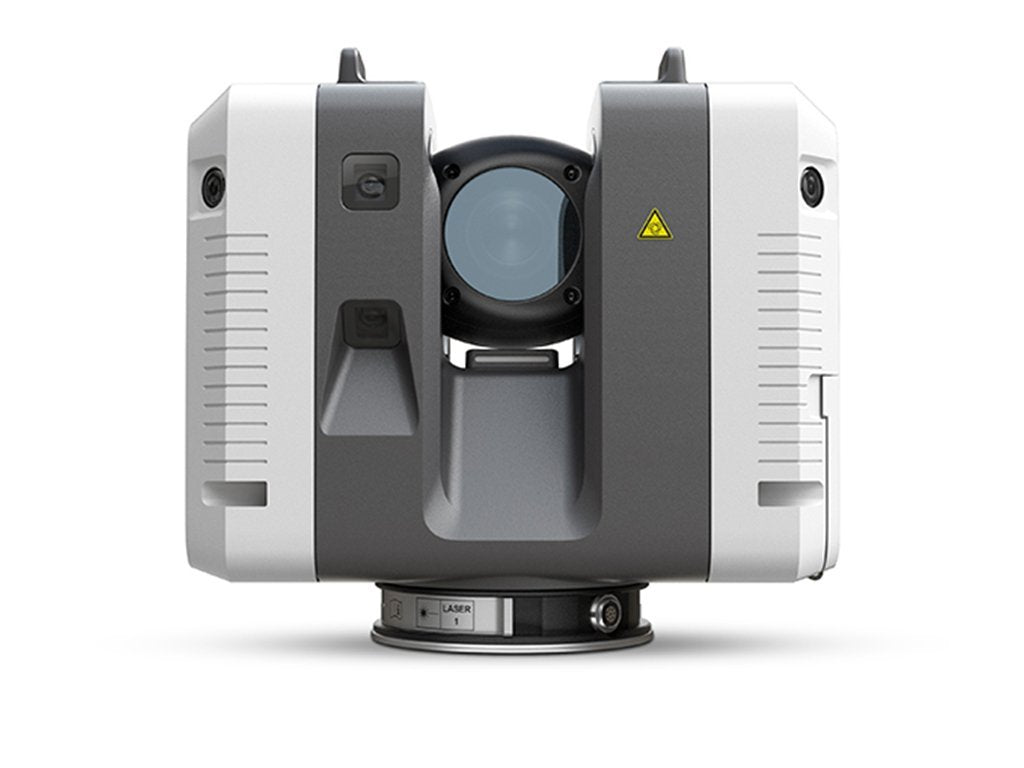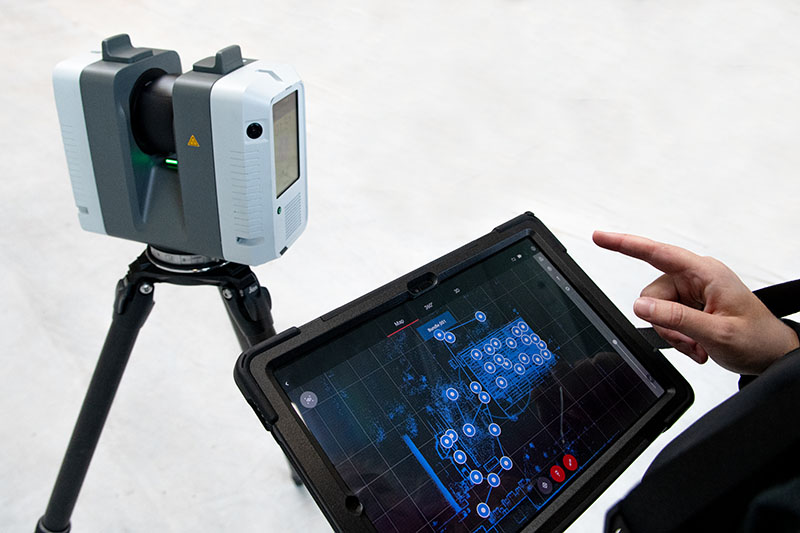How 3D Scanning Speeds Up the Planning Phase
How 3D Laser Scanning Reinvents Architectural Style and Building Projects
3D laser scanning is changing the landscape of architectural layout and construction. This technology supplies unrivaled precision in catching existing settings, which helps with far better project planning and execution. It reduces errors while enhancing performance in different phases of development. The effects for partnership amongst engineers, engineers, and various other stakeholders are substantial. These innovations open up the door to brand-new layout opportunities and ingenious solutions. What lies ahead for this advancing technology?
The Basics of 3D Laser Scanning Modern Technology
3D laser scanning technology may appear facility, its core concepts are simple and transformative for architectural layout. This technology uses laser beams to catch specific dimensions of physical structures, generating an in-depth factor cloud that stands for the scanned setting. A laser scanner gives off fast pulses of light, determining the time it takes for the light to return, which permits the computation of ranges with exceptional precision.
The resulting factor cloud can be exchanged a 3D design, supplying engineers with very useful visual information. This design allows experts to evaluate and manipulate layout components within their projects, permitting innovative solutions and enhanced visualization. By using 3D laser scanning, engineers can much better comprehend the current conditions of a site, guaranteeing that new designs integrate with their environments. This combination of technology right into building design notes a substantial innovation, promoting creativity and accuracy in the field.

Enhancing Accuracy and Efficiency in Architectural Projects
As architectural jobs significantly demand precision and speed, 3D laser scanning becomes a crucial tool in improving both precision and efficiency. This technology catches countless information factors in a brief timeframe, producing specific and comprehensive 3D models of existing structures. The ability to obtain accurate measurements decreases the danger of errors throughout the style phase, allowing architects to imagine their jobs with unmatched quality.
The fast data collection process minimizes the time invested on-site, making it possible for teams to concentrate on evaluation and style enhancements. With real-time data availability, modifications can be made promptly, promoting a more streamlined operations. The combination of 3D laser scanning into architectural practices not just enhances measurement precision however also boosts the general job timeline, helping with quicker decision-making. In an industry where accuracy is essential, this modern technology stands as a transformative force, elevating the criteria of architectural design and building and construction jobs.
Streamlining Collaboration Amongst Stakeholders
While conventional architectural procedures commonly involve fragmented interaction among stakeholders, 3D laser scanning cultivates a much more cohesive joint atmosphere. By providing accurate, high-resolution information, this innovation allows designers, clients, service providers, and engineers to run from a unified point of recommendation. The detailed visualizations produced via laser scanning eliminate obscurities and misconceptions, ensuring that all celebrations have accessibility to the very same info.
This openness enhances decision-making and motivates prompt responses, as stakeholders can easily imagine style components and spatial partnerships. On top of that, the combination of 3D scanning data into Structure Information Modeling (BIM) platforms better enhances collaboration, enabling for real-time updates and adjustments. Such smooth communication not only reduces disputes however likewise speeds up job timelines, as all stakeholders continue to be aligned throughout the design and building phases. Eventually, 3D laser scanning changes typical operations right into a more joint and reliable process, benefiting all parties entailed.
Opening Creative Possibilities in Design
By enabling engineers to envision intricate elaborate details and spatial relationships, 3D laser scanning exposes innovative opportunities in layout. This innovation permits accurate mapping of existing environments, enabling engineers to check out innovative concepts that could have previously seemed not practical. With extremely accurate information, designers can experiment with unconventional kinds and materials, pushing the limits of standard design.
In addition, the assimilation of 3D laser scanning right into the layout procedure promotes partnership among multidisciplinary teams, motivating the exchange of ideas and enhancing imagination. The comprehensive visualizations produced by this technology not just aid in identifying possible style difficulties but additionally influence solutions that may not have been taken into consideration. As an outcome, architects can produce more vibrant and engaging rooms that resonate with customers while satisfying functional needs. Inevitably, 3D laser scanning changes the architectural landscape, empowering developers to recognize their visions with unprecedented accuracy and creative thinking.
The Future of 3D Laser Scanning in Architecture and Construction
The combination of 3D laser scanning right into building layout not only enhances creativity yet likewise sets the phase for its developing function in the future of architecture and building. As technology advancements, the accuracy and efficiency of laser scanning will certainly continue to enhance, enabling home builders and designers to create a lot more complex layouts with accuracy - 3D Scanning. Making use of this innovation in real-time information collection will facilitate much better decision-making, minimizing mistakes and enhancing process
Future applications might include enhanced and online reality integrations, allowing stakeholders to visualize projects in find more information immersive settings. Additionally, as sustainability comes to be a top priority, 3D laser scanning will certainly support the advancement of energy-efficient designs by providing detailed understandings right into existing structures. As collaboration among numerous techniques ends up being more vital, the capacity to share exact 3D designs will cultivate development and enhance job results. Inevitably, 3D laser scanning will redefine standards in architectural layout and building techniques.
Regularly Asked Concerns
What Is the Price of Executing 3D Laser Scanning Technology?

The length of time Does a Common 3D Laser Scanning Job Take?
A typical 3D laser scanning project can take anywhere from a few hours to numerous days, depending upon elements such as the job's dimension, intricacy, and the level of information required for exact information capture.
What Sorts Of Projects Benefit Most From 3D Laser Scanning?
3D laser scanning benefits numerous projects, especially massive buildings, historical remediations, and complex renovations. It boosts accuracy in measurements, lowers mistakes, and offers detailed information necessary for effective planning and implementation in architectural design and building and construction.

Exist Specific Software Application Programs Required for 3D Laser Scans?
Yes, certain software application are important for processing 3D laser scans. 3D Scanning. Popular choices consist of Autodesk Wrap-up, Faro Scene, and Leica Cyclone, each offering one-of-a-kind attributes customized for picturing and assessing checked information properly in numerous projects
How Does 3D Laser Scanning Impact Environmental Sustainability in Construction?
3D laser scanning enhances environmental sustainability in construction by minimizing material waste, enabling precise measurements, and advertising reliable source usage. This modern technology allows for far better preparation, lowering the environmental footprint of building projects through improved precision and effectiveness.
3D laser scanning is transforming the landscape of architectural design and building and construction. 3D laser scanning modern technology might check these guys out seem complex, its core principles are transformative and simple for architectural layout. By allowing designers to visualize intricate spatial partnerships and complex details, 3D laser scanning reveals imaginative opportunities in design. The integration of 3D laser scanning right into the design procedure promotes collaboration amongst multidisciplinary teams, urging the exchange of ideas and improving creativity. The integration of 3D laser scanning into architectural style not just improves creativity yet likewise establishes the phase for its evolving duty in the future of style and building.